Is the PGA Tour making a huge mistake?
Published: Last updated:
PGA Tour action has resumed – but should it have done so?
The PGA Tour has returned to at least some of its glory. What used to be the Colonial Invitational but is now the Charles Schwab Challenge – no prizes for identifying which title will have more historical resonance – led the charge back to something akin to normalcy in the cloistered world of professional golf. Never before has that last adjective been more appropriate.
Until things improve on the Covid-19 front, no paying spectators will be attending tournaments on the planet’s biggest and most lucrative circuit. Not one. That’s not all bad, of course. Not many of us, I suspect, will miss the moronic “get in the hole!” or “mashed potatoes” chants emanating from the intellectually challenged members of the gallery.

One other person will be missing, at least for the foreseeable future. Your intrepid (no-one else ever uses that adjective to describe me – can’t think why) correspondent will not be in attendance. Quite apart from the fact that a fortnight in quarantine en route to Fort Worth is something I can do without, none of my various employers has asked me to make the trip. But those points are both moot.
To my way of thinking, PGA Tour commissioner Jay Monahan is taking the biggest risk of his professional life. Sending 1,100 members of society into a so-called “bubble” in which only 400 are going to be tested for a virus that has already claimed the lives of so many, is, at least from this distance, foolhardy.
I wouldn’t go even if I could, especially as all members of the media will apparently be part of the 700 rather than the 400. Which is just one more reason not to jump on a flight to Texas. How keen do we think players are going to be to talk to an untested press corps? Even less than normal, which in some cases is “hardly at all” anyway.

Look, I get the fact that Monahan will be under pressure from all sorts of lobbyists, not least those with an economic interest in the Tour returning sooner rather than later. Many players can surely be relied upon to make such a case. And there will be broadcasting contracts to fulfil, deals we can safely assume contain financial penalties for any forms of default. But come on, we’re talking about people’s lives here.
Across the Atlantic, the European Tour in the shape of chief executive Keith Pelley, has, on the face of it, adopted a more conservative and sensible approach. No more than 500 people will be inside the “bubble” when the Old World circuit cranks up again with the British Masters in late July. More importantly, every single one of those folks will be tested multiple times during the week at Close House near Newcastle. No system is ever perfectly safe, but I like Pelley’s odds a lot more than I do Monahan’s.
I’m not alone, either. As those with even a modicum of interest in golf will know by now, the likes of Lee Westwood, Tommy Fleetwood and Adam Scott have already expressed varying degrees of reluctance to put themselves in what can only be described as ‘danger’. “Right now, I won’t be playing,” said Westwood. “Not with having to leave home two weeks before to quarantine. To me, that’s just not worth it. It’s just not worth taking the risk, especially when everyone thinks all kinds of precautions have to be in place. I don’t think golf is a priority if it’s that severe.”
Scott was more specific, the Australian sharing my doubts over safety. “My initial reaction was surprise that things aren’t going to be tighter,” Scott said. “It seems like an asymptomatic person could operate within a tournament. If they’re not showing symptoms and I somehow pick it up, I’m disqualified. Then I’m self-isolating (in that city) for two weeks. I think it would be better to start quite tight and loosen those protocols to normal if appropriate.”
Indeed. So for now – and just like Adam – I’ll be staying at home.
The PGA Tour’s coronavirus safety plan
The plan was crafted alongside leading medical experts from Harvard Medical School, with input from the U.S. Federal Coronavirus Task Force and fellow professional sports leagues, as well as other specialists and laboratory experts.
“We’re excited about how the PGA Tour can play a role here in the world’s return, if you will, to enjoying things we love and doing so in a responsible manner,” says Tyler Dennis, PGA Tour Senior Vice President & Chief of Operations. “We have spent a lot of time being very thoughtful, diligent and trying to be transparent with all of our constituent groups and thinking through what we’re calling our return-to-golf plan.”

“It’s really a layered approach that we’ve taken, and the heart of it is social distancing,” he said. “It’s something we’re all quite accustomed to in our personal lives now. We know that we can go throughout our day and week at a tournament site in a socially distant manner. That’s really critical to the overall health and safety plan.”
Those social-distancing measures will be best showcased during competition, where post-round handshakes and high-fives have been banned. Players and caddies will also distance themselves more than usual, with, for example, players accessing their own golf bags instead of the caddie.
“We have taken the time to think really through a day in the competitive life of a player and caddie and how we need to make some small adjustments in places to ensure that we can be as comprehensive as possible with our health and safety,” says Dennis.
Layered on top of those social-distancing procedures will be the complete testing and screening plan, as well as a significant enhancement in disinfectant and hygiene practices. An average of 400 people are expected to be tested each week.
Players, caddies and other officials will take part in a required pre-travel testing program and then undergo a trio of screening methods upon arrival at a tournament stop. This will include answering questions, submitting to a thermal temperature reading and a nasal swab test, which diagnoses COVID-19. Throughout the week, anyone who comes on site must go through a questionnaire and thermal screening before entering the property, according to Andy Levinson, PGA Tour Chief Tournaments and Competitions Officer.
In the event of an elevated temperature of more than 100.4 degrees Fahrenheit during the daily thermal screen, the Tour will initiate a protocol that could include a COVID-19 test.
The Tour aims to have test results back within 24 to 48 hours, though it has identified local laboratories that are not burdened with community testing to help decrease turnaround time. While awaiting test results, players are allowed to practice and play as long as they practice social distancing and do not use on-site facilities.
In the event of a positive test, the person must isolate for a minimum of 10 days after the first positive test with no subsequent symptoms or two negative test results at least 24 hours apart. The Tour and tournaments will both provide support throughout any potential isolation period.

That limited access begins first with spectators, who are not allowed at any of the Tour’s first four events once play resumes. Pro-ams have also been barred in the near term. Fans’ attendance at any tournament beyond the initial four tournaments has not been determined. Beyond that, players’ families will not be permitted on site, and golfers will have scaled-back support staff limited only to an instructor, coach or interpreter. Clubhouse access will also be limited only to those who are cleared through testing.
Media will be limited, and one-on-one interviews will also be disallowed. All media sessions will take place in a socially-distance-conscious flash area.
Personal protection equipment such as face masks will be available, and sanitary items such as disinfectant wipes and hand sanitizer will be available throughout each property where the Tour plays.
“We’ve really taken the approach of looking at every single person who’s on site, walking a day in their shoes, trying to recognize those touch points and understanding ways that we can mitigate that,” says Levinson.
The Tour’s controlled “bubble” will be extended beyond the golf course, too. Players are encouraged to stay at one designated host hotel, and the Tour will provide charter flights between PGA Tour, PGA Tour Champions and Korn Ferry Tour events, to a maximum of 170 players and caddies. Courtesy cars will be decided by each event but using rideshare services is not allowed.
“We’re going to ask [players] to act as if they are now and how they have been for the past couple of months, which is a safer-at-home philosophy,” Levinson said. “That means not going into crowded areas, not going to restaurants necessarily but doing take-out instead, and we’re going to work with the local hotels to ensure that they have proper health and safety plans.”
“It’s important for us to mitigate the risk wherever we can, and we also have an obligation to the communities in which we’re playing, an obligation to the people who are going to be watching us in our broadcast, and that is to set a good example, and we believe we can do that with the plan we’ve set forth,” he added.
-
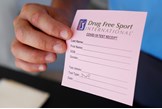 Players are being tested for coronavirus on the PGA Tour – but not everyone else is.
Players are being tested for coronavirus on the PGA Tour – but not everyone else is.
-
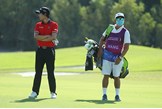 PGA Tour players and caddies will modify their behaviour to reduce the risk of transmitting Coronavirus.
PGA Tour players and caddies will modify their behaviour to reduce the risk of transmitting Coronavirus.
-
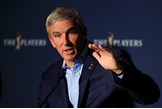 PGA Tour commissioner Jay Monahan hopes golf can be played safely despite the ongoing Coronavirus pandemic.
PGA Tour commissioner Jay Monahan hopes golf can be played safely despite the ongoing Coronavirus pandemic.
-
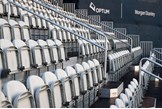 The PGA Tour is being played with no fans.
The PGA Tour is being played with no fans.
-
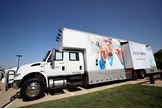 Around 400 out of 1,100 people at a PGA Tour event will be tested for coronavirus.
Around 400 out of 1,100 people at a PGA Tour event will be tested for coronavirus.
